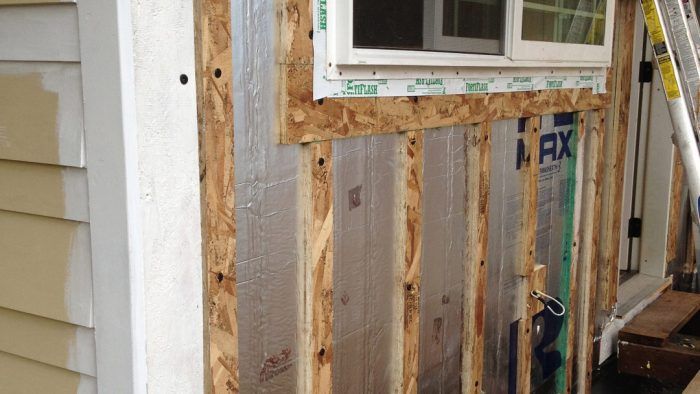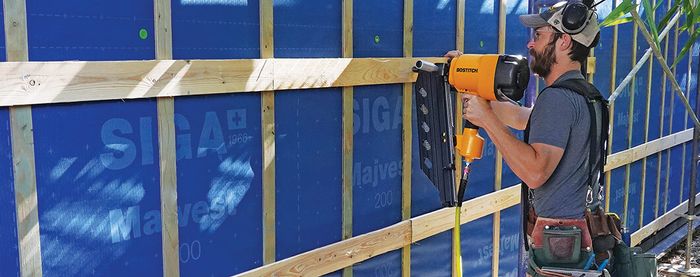The Big Rewards of a Deep Energy Retrofit
A deep energy retrofit should be part of a comprehensive retrofit that improves several integrated factors: function, comfort, energy efficiency, durability, health, and aesthetics.

by Christopher Peck
I have long advocated for deep energy retrofits; as we developed the resilient investing system, this became an obvious activity promoting tangible assets close to home. “Remodel your house so that it uses dramatically less energy,” I’d proclaim. “It’ll be more comfortable, and you can save money and the planet at the same time!”
Experts like McKinsey & Company assured me that insulation and heating systems pay off very quickly. After two years of actually tackling it at our house, the practicalities are — surprise! — a bit more complicated.
When you take a closer look at an older house, you don’t see just outdated insulation; you also see drafty windows (and possibly mold), and a dark room with only one small window, and you wonder how a house built in the 1970s would fare in an earthquake. After an even closer look, opening up walls and crawling underneath the building — well, it all gets very real very quick. You wonder, “How deep into my wallet is this retrofit going to go?”
Does a $50,000 investment make sense?
We started with a single-story ranch house built in 1971 in Sonoma County, California: 2x4s, shoddy fiberglass insulation, T1-11 for sheathing and siding. We removed the T1-11, and did a variety of upgrades with the framing exposed: adding a few bolts into the foundation and adding bigger washers to the foundation bolts, as well as adding headers and framing for new windows or doors.
In some places we had to replace the framing, and in several spots we did some rewiring and added outlets. After the framing was finished, I meticulously corrected all of the fiberglass insulation — lots of nitpicky detail to get that just right. Then we re-sheathed everything with OSB and added 2-inch foil-faced polyiso insulation held on with OSB furring strips. We installed Milgard windows, trimmed with 3 1/2-inch 5/4 HardiTrim, and added 8 1/4-inch HardiPlank siding. Then everything was painted.
As of August 2015 we’ve done almost 100 linear feet (a bit more than half) of the retrofit work on the walls. With a handful of assumptions mated to a bunch of caveats, our deep retrofit costs approximately $1,500 for each 10 linear foot section. If you’re quick at math you can see that just doing the walls will cost us close to $35,000. Add in the attic and work on the crawl space, and we’ll easily spend over $50,000 on a deep energy retrofit. Will that ever make financial sense?
My plan when we started this project was that our house would need very little supplemental energy for heating or cooling when we finished. Assuming we succeed at that, which I believe we will, we should save around $500 per year in energy costs in our moderate climate. Spend $50,000 to save $500? Have I taken leave of my senses? Shouldn’t I have to turn in my Investment Advisor membership card? But that’s a solid 1% return on investment — better than cash, right?
If the costs of a deep energy retrofit are accounted against just the energy (and carbon) savings, it will be a hard sell indeed. At fifty grand a pop, it’s hard to imagine a widespread transformation/remodel of our existing housing stock; and indeed, we have not seen that. Colder and hotter climates will have better ROIs, of course, but there are other challenges.
People remodel all the time. It might not include energy-efficiency work, or perhaps energy efficiency work is just part of the picture. My current conclusion is that a deep energy retrofit is more accurately a part of a comprehensive retrofit that improves several integrated factors. For us, these are: function, comfort, energy efficiency, durability, health, and aesthetics.
The first three are the biggest for us; the others are add-ons — bonus benefits, but ones with real value — and other folks, even in a similar climate region, will rank these differently. Still, the deep retrofit is not about just reducing energy waste but also about improving how we enjoy and use our home, while reassuring us that it will last long after we are gone. We like the way it looks and feels, too.
Let’s take a closer look at the long- and short-term benefits we’re gaining, beyond that $500 in energy savings.
Functionality
This is the primary reason that people remodel: to get their house working the way they want it to. Creating a great room or updating a kitchen or adding a bathroom, houses need to do so much more these days than a generation ago. We’ve turned two bedrooms into offices, with lighting and more room for electronics. When you’re already adding doors or windows, it’s a great time to improve insulation and air sealing.
Comfort
We’re the classic “put on a sweater” frugal types. The last two years we haven’t used our furnace, and last year we barely used the highly efficient wood stove. We’ve had some chilly mornings (60°F inside) but even with a 2-year old, we’ve weathered those fine. We don’t have an air conditioner and have just suffered through the three to four hot days each summer. For us the goal is less about saving money on energy for heating and cooling and more about improving the comfort range of the house. Families that use more heat will see greater energy-reduction benefits than we do!
Durability
I say that durability is an add-on because as we open up walls to improve insulation, we also add a couple of foundation bolts (or just use beefier washers) and then we add full length OSB sheathing to replace the partial siding that was here. We’re also repairing the various rotted corners or termite-ridden rim joists while eliminating the moisture infiltration that supports termite habitat, an obvious long-term benefit. Whenever we complete a section we fully expect that it won’t need care for 50 years.
Health
Replacing windows and improving bathroom ventilation has reduced mold, which was a minor problem. Reducing mold is a major health plus, but definitely wasn’t the driver for the whole project. It would be hard to justify the expense of a remodel just to control indoor humidity levels, but as an add-on benefit it is very much appreciated — and has value.
Aesthetics
Each step we take in our remodel journey brings our house closer to our image of home. The look of the trim, the subtle ornamentation details, the paint color, the lighting options, each piece is adding up to a more integrated and more pleasing composition.
One unexpected benefit we’ve noticed from all of our improvements is how much quieter our house is. It doesn’t wheeze or rattle in the wind and trucks driving by don’t shake the windows. Going deep has payoffs we hadn’t realized before we started, and the return on investment looks like it will continue to improve over time, especially when also considering the increased resale value. I still recommend going for it!
Originally published on GreenBuildingAdvisor.com. Photo by author. Christopher Peck is a managing partner of Natural Investments LLC, a portfolio management firm. Peck is the co-author with Hall Brill and Michael Kramer of The Resilient Investor: A Plan for Your Life Not Just Your Money published in 2015. Peck lives with his wife, son and parents on a developing homestead in suburban Sonoma County, California. He’s been working on his home since 2008. A version of this post originally appeared at The Resilient Investor.

